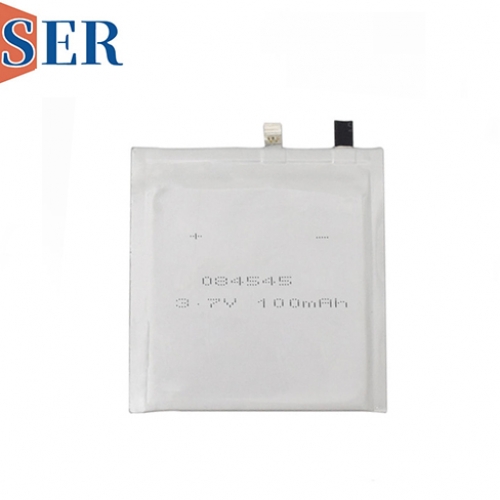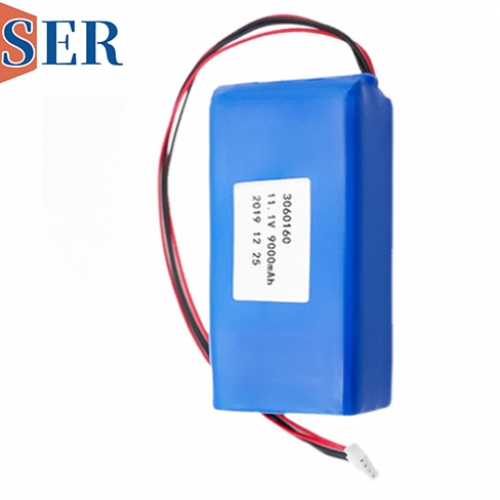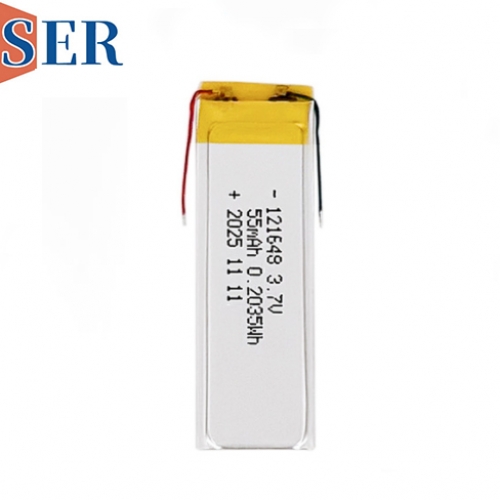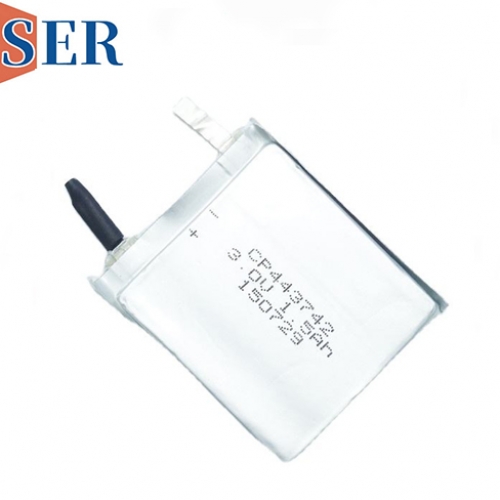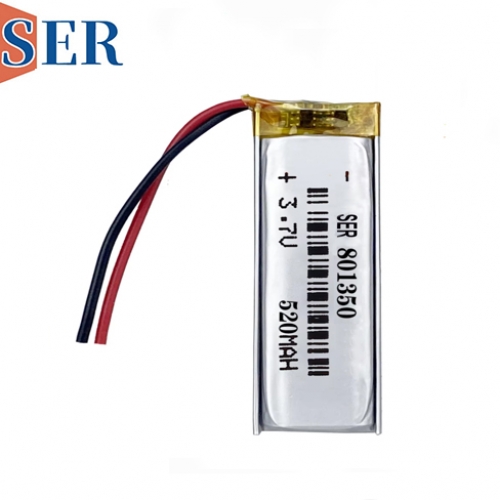SER LP405080 3.7V 1850mAh Rechargeable LiPo Battery
SER LP405080 3.7V 1850mAh Rechargeable LiPo Battery
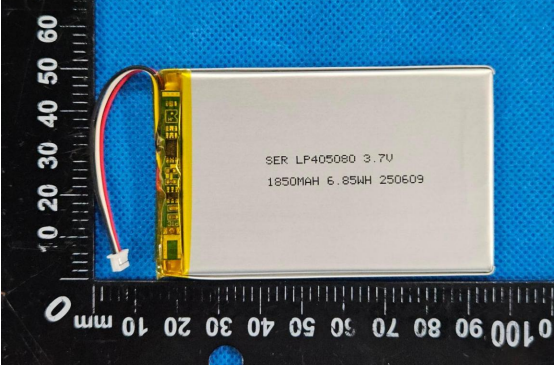
Introduction
In the ever - evolving landscape of portable electronics, rechargeable batteries play a pivotal role in powering a wide range of devices. Among them, lithium - polymer (LiPo) batteries have emerged as a popular choice due to their high energy density, lightweight nature, and flexibility in design. The SER405080 3.7V 1850mAh rechargeable LiPo battery is a prime example of such a battery, equipped with a Protection Circuit Module (PCM) circuit board and certified by international standards including IEC62133, MSDS, and UN38.3. This article aims to provide an in - depth exploration of this battery, covering its basic characteristics, the significance of the PCM, certification details, applications, performance factors, and maintenance tips.
Battery Specifications and Characteristics
Physical Dimensions and Design
The SER405080 Lipo battery gets its name from its approximate dimensions: 40mm in length, 50mm in width, and 80mm in height (the exact dimensions may vary slightly depending on the manufacturer's specifications). This relatively compact size makes it suitable for integration into various portable electronic devices where space is often at a premium. The lithium - polymer construction allows for a thin and flexible form factor compared to traditional cylindrical lithium - ion batteries, enabling designers to create more ergonomic and innovative product shapes.
Electrical Specifications
Voltage: The battery operates at a nominal voltage of 3.7V. This is a standard voltage level for many single - cell LiPo batteries and is well - suited for powering low - to medium - power electronic devices such as smartphones, smartwatches, and portable gaming consoles. During charging, the voltage can rise to around 4.2V, and during discharge, it gradually decreases. It is important to note that operating the battery outside its specified voltage range can lead to performance degradation or even safety hazards.
Capacity: With a capacity of 1850mAh (milliampere - hours), the SER405080 can store a significant amount of electrical energy. This capacity determines how long the battery can power a device before it needs to be recharged. For example, if a device consumes 100mA of current continuously, the battery can theoretically power it for approximately 18.5 hours (1850mAh / 100mA = 18.5h). However, actual usage times may vary depending on factors such as the device's power management efficiency, operating mode, and environmental conditions.
Energy Density
One of the key advantages of LiPo batteries is their high energy density. The SER405080 offers a relatively large amount of energy storage in a compact package, which is crucial for portable devices that require long - lasting power without adding excessive weight. This high energy density is achieved through the use of advanced lithium - polymer chemistry, which allows for a higher proportion of active materials in the battery cells compared to other battery types.
The Role of the Protection Circuit Module (PCM)
Overview of PCM
The PCM is an essential component integrated into the SER405080 battery. It serves as a safeguard to protect the battery from various potential issues that could arise during charging, discharging, and storage. The PCM consists of a set of electronic components, including integrated circuits, resistors, and capacitors, which work together to monitor and control the battery's operation.
Protection Functions
Over - charging Protection: One of the primary functions of the PCM is to prevent over - charging of the battery. When the battery voltage reaches its maximum safe level (usually around 4.2V), the PCM automatically cuts off the charging current, preventing further voltage increase. Over - charging can cause the battery to overheat, swell, or even explode, so this protection is crucial for ensuring the safety and longevity of the battery.
Over - discharging Protection: Similarly, the PCM protects the battery from over - discharging. When the battery voltage drops to a certain low level (typically around 2.7 - 3.0V), the PCM disconnects the load from the battery, preventing further discharge. Over - discharging can damage the battery's internal structure and reduce its capacity over time.
Short - Circuit Protection: In the event of a short - circuit, where the positive and negative terminals of the battery are directly connected, the PCM quickly detects the excessive current flow and shuts down the battery to prevent overheating and potential fire hazards.
Over - current Protection: The PCM also monitors the current flowing in and out of the battery. If the current exceeds a safe limit during charging or discharging, it will limit or cut off the current to protect the battery and the connected device.
Certification Standards
IEC62133
IEC62133 is an international standard that specifies safety requirements for secondary cells and batteries containing alkaline or non - acidic electrolyte. For the SER405080 battery, compliance with IEC62133 ensures that it has undergone rigorous testing for various safety aspects, including electrical, mechanical, and environmental performance. This certification gives consumers and manufacturers confidence in the battery's safety and reliability, especially when used in consumer electronics products that are subject to strict safety regulations.
MSDS (Material Safety Data Sheet)
The MSDS provides detailed information about the chemical composition and properties of the battery materials. It includes information on potential health hazards, safe handling procedures, storage requirements, and emergency response measures in case of accidents such as leaks or spills. The MSDS is an important document for ensuring the safe transportation, storage, and use of the battery, especially in industrial and commercial settings where multiple batteries may be handled simultaneously.
UN38.3
UN38.3 is a United Nations standard for the transport of dangerous goods, specifically applicable to lithium batteries. This certification involves a series of tests, including altitude simulation, thermal test, vibration, shock, external short - circuit, over - charging, and forced discharge tests. By obtaining UN38.3 certification, the SER405080 battery can be safely transported by air, sea, or land, meeting the strict regulations of international transportation authorities. This is crucial for the global distribution of electronic products that use this battery.
Applications
Consumer Electronics
The SER405080 battery is widely used in various consumer electronics devices. In smartphones, its compact size and high energy density allow for long - lasting battery life in sleek and lightweight designs. Smartwatches also benefit from this battery, as it can provide enough power to support the device's various functions, such as heart rate monitoring, notifications, and GPS tracking, for an extended period. Portable gaming consoles, e - readers, and digital cameras are other examples of consumer electronics that rely on this battery to deliver reliable power on the go.
Internet of Things (IoT) Devices
With the rapid growth of the IoT, there is an increasing demand for small, efficient, and long - lasting batteries to power a wide range of connected devices. The SER405080 is well - suited for IoT applications such as smart home sensors, wearable health monitors, and industrial IoT devices. These devices often operate on low power and require batteries that can last for months or even years without replacement. The battery's PCM also ensures safe operation in these devices, which may be deployed in various environments and be subject to different usage patterns.
Medical Devices
In the medical field, portable devices such as glucose meters, portable ultrasound machines, and patient monitors require reliable and safe power sources. The SER405080 battery, with its certification standards and protection features, can meet the stringent requirements of medical applications. Its compact size allows for easy integration into handheld medical devices, while its high energy density ensures sufficient power for critical patient care functions.
Performance Factors
Temperature Effects
The performance of the SER405080 battery is significantly influenced by temperature. At high temperatures, the battery's internal chemical reactions accelerate, which can lead to faster self - discharge, reduced capacity, and shorter cycle life. In extreme cases, high temperatures can also cause the battery to overheat and pose a safety risk. On the other hand, at low temperatures, the battery's internal resistance increases, reducing its ability to deliver current and power. This can result in slower charging times and decreased device performance. Therefore, it is important to operate and store the battery within the recommended temperature range specified by the manufacturer.
Cycle Life
The cycle life of a battery refers to the number of charge - discharge cycles it can undergo before its capacity drops to a certain percentage of its original value. The SER405080 battery typically has a cycle life of several hundred cycles, depending on factors such as charging and discharging rates, depth of discharge, and operating temperature. Proper charging and discharging practices, as well as avoiding extreme operating conditions, can help extend the battery's cycle life and maximize its overall performance.
Maintenance Tips
Charging Practices
To ensure the longevity and safety of the SER405080 battery, it is important to use a compatible charger that is designed for LiPo batteries. Avoid using chargers that are not specifically rated for this battery type, as they may not provide the correct charging voltage and current, leading to over - charging or under - charging. It is also recommended to charge the battery at room temperature and avoid charging it immediately after use when it may still be warm.
Storage Conditions
When storing the battery for an extended period, it should be charged to around 50 - 70% of its capacity. This helps to prevent over - discharging during storage, which can damage the battery. The battery should be stored in a cool, dry place, away from direct sunlight and heat sources. It is also advisable to store the battery in a protective case or packaging to prevent physical damage.
Regular Inspection
Periodically inspect the battery for any signs of damage, such as swelling, leakage, or cracks. If any of these signs are detected, the battery should be immediately removed from service and disposed of properly according to local regulations. Regular inspection helps to identify potential safety issues early and prevent further damage to the battery or connected devices.
Conclusion
The SER405080 3.7V 1850mAh rechargeable LiPo battery with PCM circuit board and IEC62133, MSDS, UN38.3 certifications is a versatile and reliable power source for a wide range of applications. Its compact size, high energy density, and built - in protection features make it an ideal choice for consumer electronics, IoT devices, and medical equipment. By understanding its specifications, performance factors, and maintenance requirements, users can maximize the battery's performance, safety, and lifespan, ensuring that their devices operate smoothly and efficiently. As technology continues to advance, we can expect further improvements in LiPo battery technology, leading to even more powerful and sustainable power solutions for the future.

